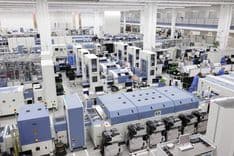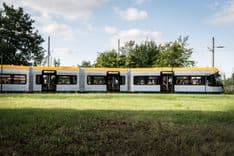Volkswagen Commercial Vehicles
Higher quality with less effort in the multi-year planning at Volkswagen Commercial Vehicles
 © Volkswagen Commercial Vehicles
© Volkswagen Commercial VehiclesThe Challenge: High Complexity and Low Transparency of Cause-and-Effect Relationships in Multidimensional Business Models
Before the implementation of Valsight, the multi-year planning at Volkswagen Commercial Vehicles was decentralized. The data was scattered across various organizational levels and databases, primarily Excel files. Additionally, planning was highly detailed, resulting in months-long lead times. However, the cause-and-effect relationships could not be clearly traced. The precision conveyed by the level of detail led to the opposite effect: By the time the planning was completed, the detailed data no longer necessarily reflected the company's reality.
In short, the planning processes were time-consuming, relatively inflexible, and the results were not informative enough for effective control. Furthermore, they tied up many personnel resources for collecting and recording data over months, leaving little time for controllers to focus on developing and analyzing measures.
The Solution: Centralized Driver-Based Planning With Real-Time Scenario Simulation
The optimization of planning relies on the introduction of a new planning approach, made possible by a new technical solution that enables its effective implementation. As a result, Volkswagen Commercial Vehicles Controlling now conducts driver-based and simulation-driven planning with Valsight, elevating its planning processes to new digital standards.
Initially, in a few collaborative workshops, driver models were established, focusing primarily on essential drivers while leaving out unnecessary details. For example, instead of considering all 100+ markets, the focus is now on around one-fifth of these markets, which represent over 90% of the contribution to results.
The planning process is divided into two phases. First, the volume planning is represented in Valsight, where the sales controlling enters sales volumes and conducts initial simulations. These simulations are crucial in understanding the potential outcomes if desired sales volumes cannot be produced in the factories. Secondly, the value planning follows, with most inputs provided by individual departments: Procurement controllers input procurement data, sales controllers for sales, and production controllers for production. Eventually, all data is integrated and visible to everyone in Valsight.
Different scenarios can be quickly created in Valsight and subsequently discussed. The inclusion of assumptions and measures enables direct comparisons. For instance, the impact of a crisis-induced supplier failure and resulting production stoppages on the planning result can be rapidly calculated.
The Result: Increased Quality With Less Effort
The use of Valsight ensures higher quality, speed and effectiveness of multi-year planning - and leads to a new agility in controlling.
"With Valsight, we avoid false precision and become faster.“
Julian Höfers, former Controller, Volkswagen Commercial Vehicles
Specifically, Valsight offers VWN Controlling sustainable added value, in particular:
Transparency of cause-effect relationships: Complex, multidimensional models are clearly presented. Different business units can be related to each other with the help of the model logic, which makes cause-effect relationships clear and thus creates clarity about the influence of drivers and measures on financial targets.
Reduced complexity: The complexity of planning has been significantly reduced by focusing on key drivers.
Higher data quality: All controlling units work on the same data basis instead of with separate Excel files. For example, sales and plant controlling can ensure that the sales targets of the sales department match the plant capacities.
Increased flexibility and speed: In contrast to the previously used planning solution, not only are fewer personnel resources tied up, but the speed is also increased. Volume and value planning, for example, take only one third of the time previously needed for this. New planning requirements can be implemented flexibly with the software. The intuitive usability enables the technical department to model and simulate independently, so that they can create and change driver trees and run through any number of scenarios without IT support. Communication is also faster: the exchange takes place visibly and quickly for all participants via Valsight.
Strengthening the role of controlling as a business partner and driver of digital transformation: Data can be easily imported and then evaluated with a click, so that decision-relevant information is available at the touch of a button. The exchange is faster, which means that it is possible to react promptly to market changes. Controlling is thus able to derive recommendations for action within a very short time and to take a more active role in decision-making in interaction with management. And there's more: Controlling is where all financial data relevant to the balance sheet flows together, from production to sales. Being able to better analyse and evaluate this data digitally promotes the company-wide digital transformation.
The video is only available in German.
About Volkswagen Commercial Vehicles
Volkswagen Commercial Vehicles is an independent brand in the Volkswagen Group. As a leading manufacturer of light commercial vehicles, the company produces and sells vehicles for commercial use as well as cars for private customers in the lifestyle, family and camping segments - and is represented with country-specific configurations in over 100 markets worldwide. As part of the Volkswagen Group's NEW Auto strategy, Volkswagen Commercial Vehicles is responsible for the development of autonomous driving and mobility services Mobility-as-a-Service and Transport-as-a-Service.


